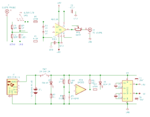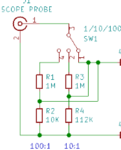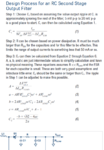Swend
Full Member level 4
- Joined
- May 14, 2019
- Messages
- 237
- Helped
- 10
- Reputation
- 20
- Reaction score
- 9
- Trophy points
- 18
- Location
- Roskilde, Denmark
- Activity points
- 2,304
Hi Friends
I need a differential probe, something simple and rugged that is known to work and has minimum 100MHz bandwidth. I like this one https://www.eevblog.com/forum/projects/my-first-project-low-cost-differential-probe/
However I'm a bit worried if I can make the PCB layout, because it looks like it was made by a person that knows something about RF, which I don't.
So the question is what should I take into consideration when making the layout?
I need a differential probe, something simple and rugged that is known to work and has minimum 100MHz bandwidth. I like this one https://www.eevblog.com/forum/projects/my-first-project-low-cost-differential-probe/
However I'm a bit worried if I can make the PCB layout, because it looks like it was made by a person that knows something about RF, which I don't.
So the question is what should I take into consideration when making the layout?


